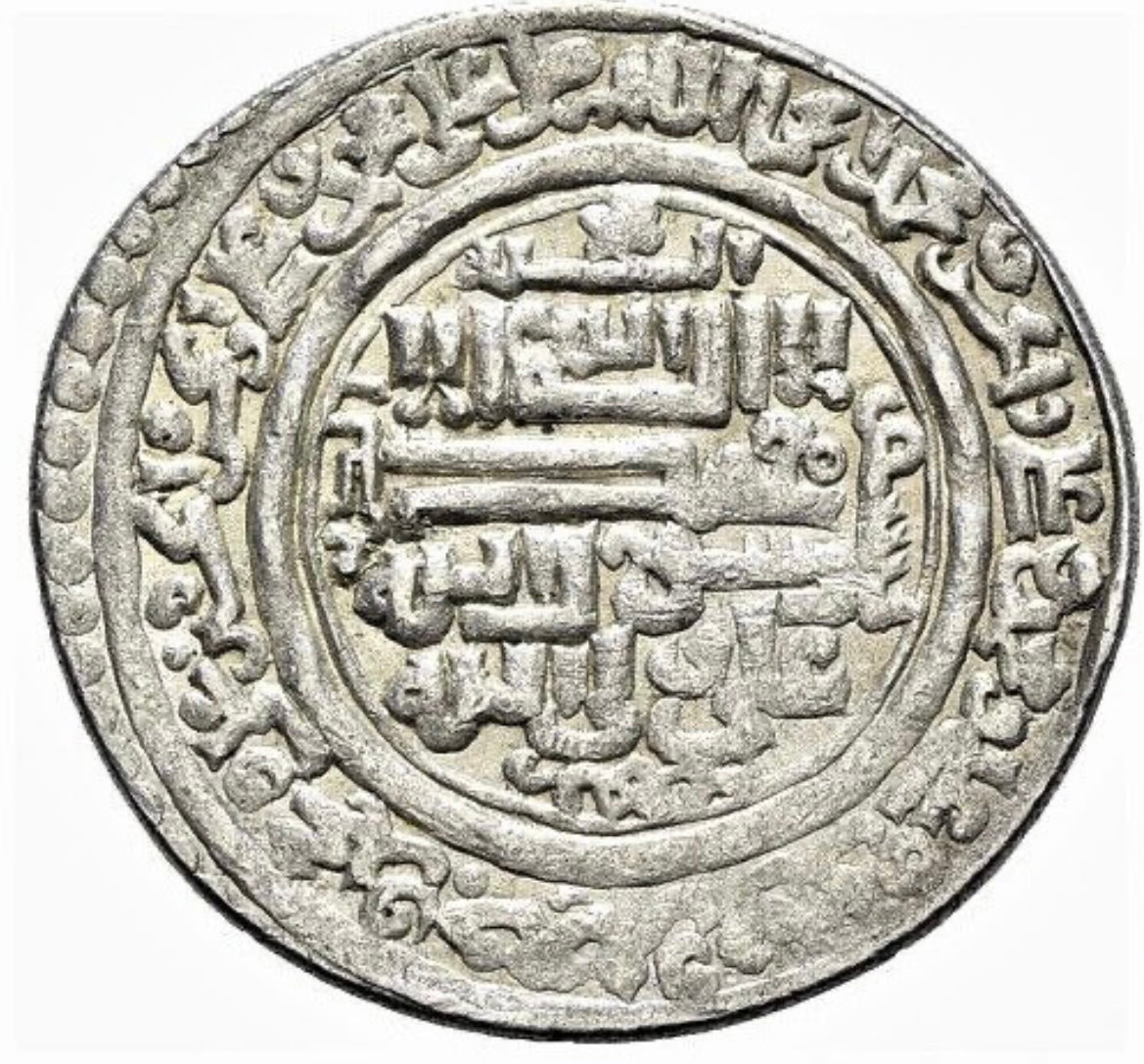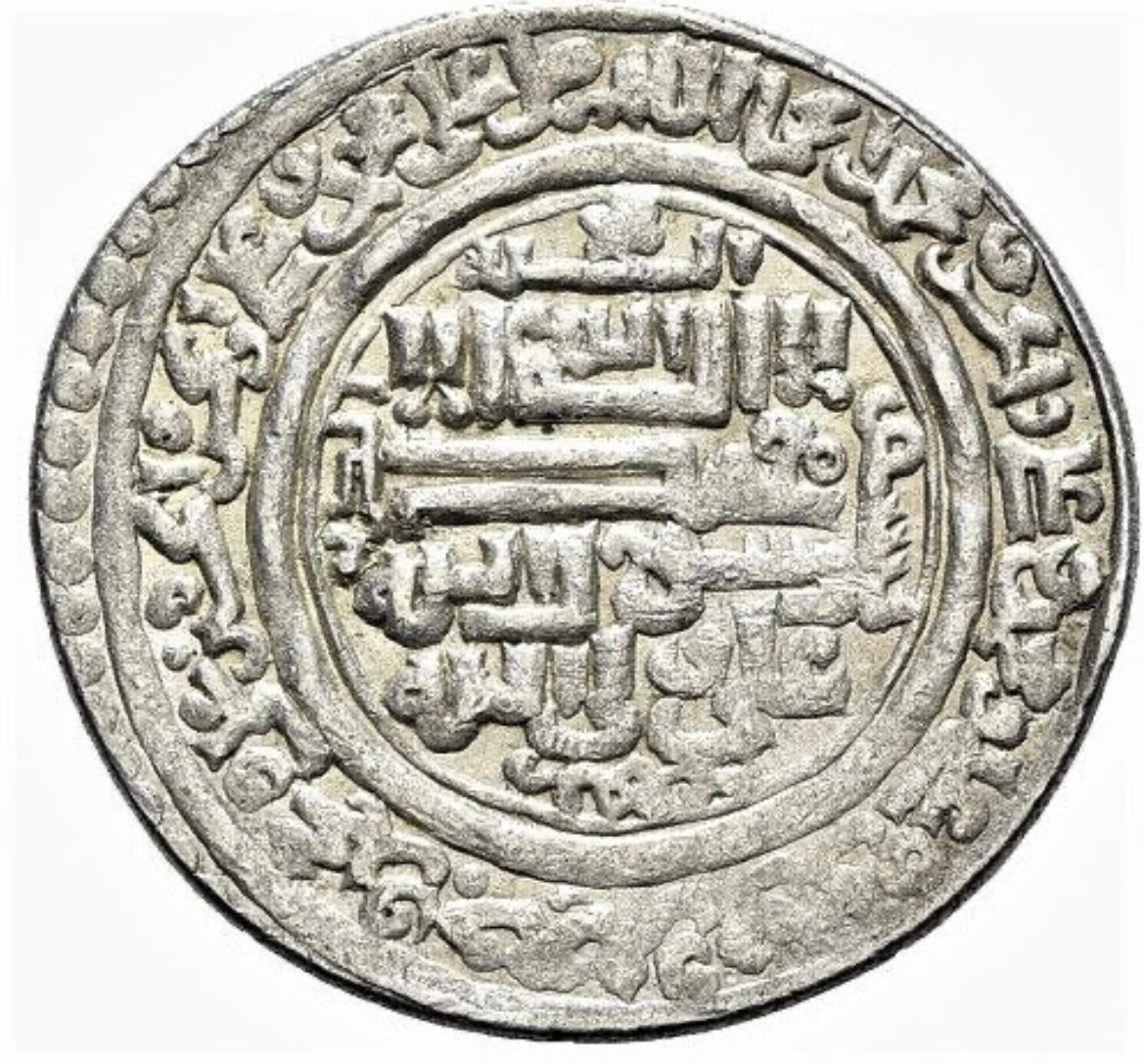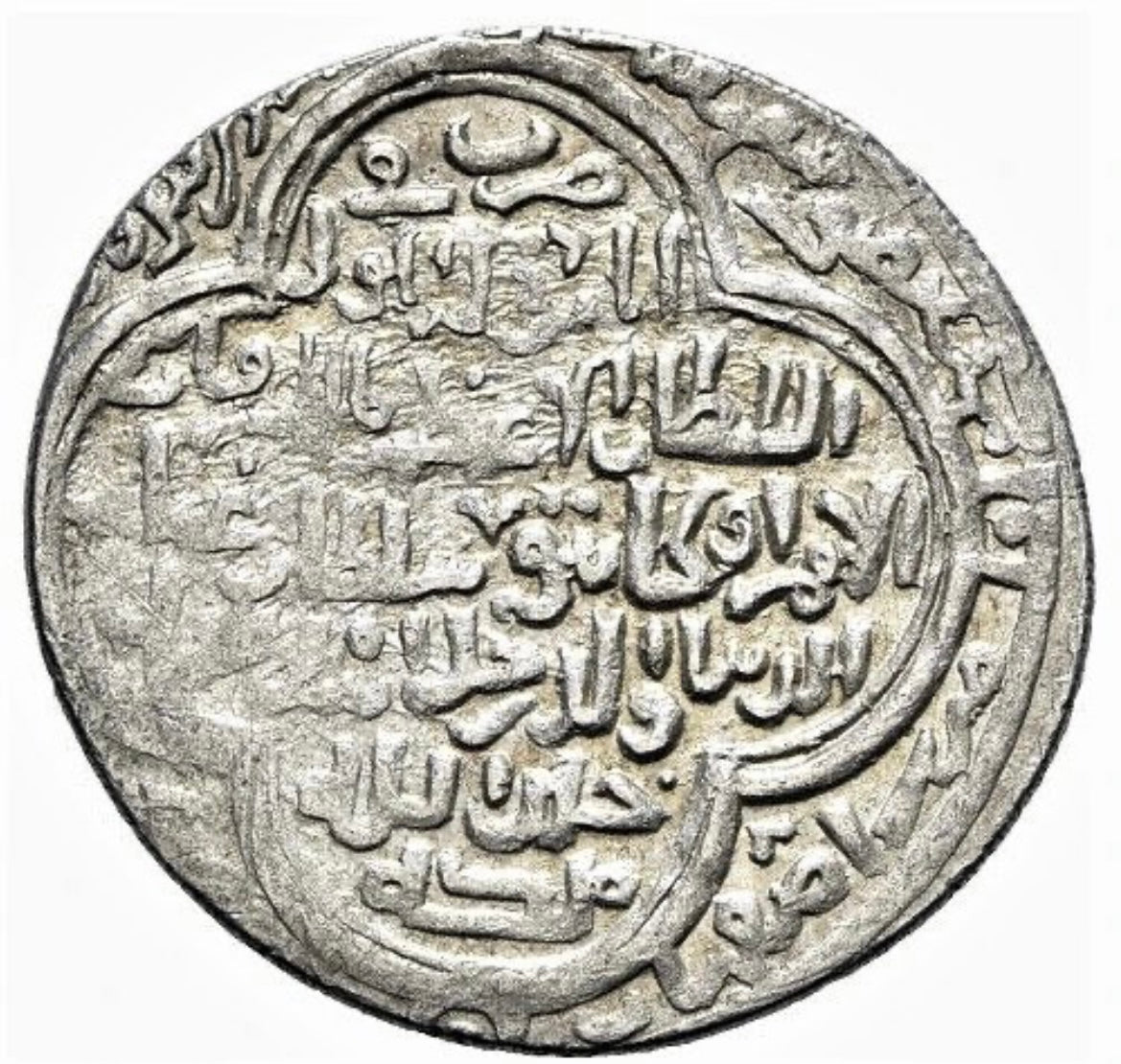1
/
of
2
Ephemundi
A Silver 'Two Dirham' from the Islamic Mongol Ilkhanate of Persia
A Silver 'Two Dirham' from the Islamic Mongol Ilkhanate of Persia
Regular price
€93,00 EUR
Regular price
Sale price
€93,00 EUR
Unit price
/
per
Taxes included.
Couldn't load pickup availability
Share
Country/province: Islamic Mongols, al Mosul, Iraq
Ruler: Uljaytu ibn Arghun AH 703-717 / AD 1303-131
Denomination: 2 Dirhams
Year/Period and Variation: AH 710 mint al-Mosul (Rare)
Precious metal: Silver
Condition: Ungraded
Size: 26,5mm
Weight: 4,3g
Abu Said Khan took the heroic title 'Bahadur the Brave' (absent from the coin's face) seen on his other coins; the reverse features the Sunni Kalima, showing his adherence to Sunni Islam as Ilkhanate ruler. The calligraphy of the coin boasts a late Kufic style, bearing striking decorations and elaborate cartouche designs, a stark contrast to the unfurnished look of early Islamic coinage. Of note is the piece's lack of tribute to a caliph – a position destroyed by Hulagu during his conquest of Baghdad. The Ilkhanate's conversion to Islam did not prevent their raidings of fellow Muslim nations, similar to most medieval empires; they sought control of resources and sovereign rights, including Sikka, the right to coin independently, a pragmatic principle adopted in Islamic world after the exit of the Abbasid Caliphs.
View full details
Ruler: Uljaytu ibn Arghun AH 703-717 / AD 1303-131
Denomination: 2 Dirhams
Year/Period and Variation: AH 710 mint al-Mosul (Rare)
Precious metal: Silver
Condition: Ungraded
Size: 26,5mm
Weight: 4,3g
Obv/ Struck at the time of the Mighty Sultan Abu Sa'id - May God perpetuate his reign
ضرب في ايام السلطان الاعظم خلّد اللّه ملكه
Rev/
No deity but God, Muhammad is the messenger of God - Abu Bakr, Umar, Uthman, Ali (the first 4 caliphs of Islam)
لا اله الا اللّه محمد رسول اللّه ابو بكر - عثمان - علي
A Silver 'Two Dirham' from the Mongol Ilkhanate of Persia, the formidable state that rose in 1259 C.E. from the fragmentation of the Mongol realm. Ruled by Hulagu Khan, grandson of Chingiz Khan, it dominated southwestern regions of the Empire, comprising of Iran and its environs. Under Hulagu's hand, Baghdad was sacked and the final Abbasid Caliph, Al-Muta'sim, slain in 1258. At its peak, the Ilkhanate governed a vast area which included modern day Iran, Iraq, Armenia, and more. Hulagu and his successors leaned towards Buddhism and Nestorian Christian faith, before embracing Islam, as led by Ghazan in 1295. Subsequent rulers strayed from this path, yet Abu Said Khan, the last of the Ilkhanate line, declared allegiance to Sunnism and issued a myriad of silver coins from 150 mints, featuring three denominations:Half dirham (0.72g-0.90 g), 1 dirham (1.44g - 1.80g) and 2 dirhams (3.24g -3.60g)
Abu Said Khan took the heroic title 'Bahadur the Brave' (absent from the coin's face) seen on his other coins; the reverse features the Sunni Kalima, showing his adherence to Sunni Islam as Ilkhanate ruler. The calligraphy of the coin boasts a late Kufic style, bearing striking decorations and elaborate cartouche designs, a stark contrast to the unfurnished look of early Islamic coinage. Of note is the piece's lack of tribute to a caliph – a position destroyed by Hulagu during his conquest of Baghdad. The Ilkhanate's conversion to Islam did not prevent their raidings of fellow Muslim nations, similar to most medieval empires; they sought control of resources and sovereign rights, including Sikka, the right to coin independently, a pragmatic principle adopted in Islamic world after the exit of the Abbasid Caliphs.




